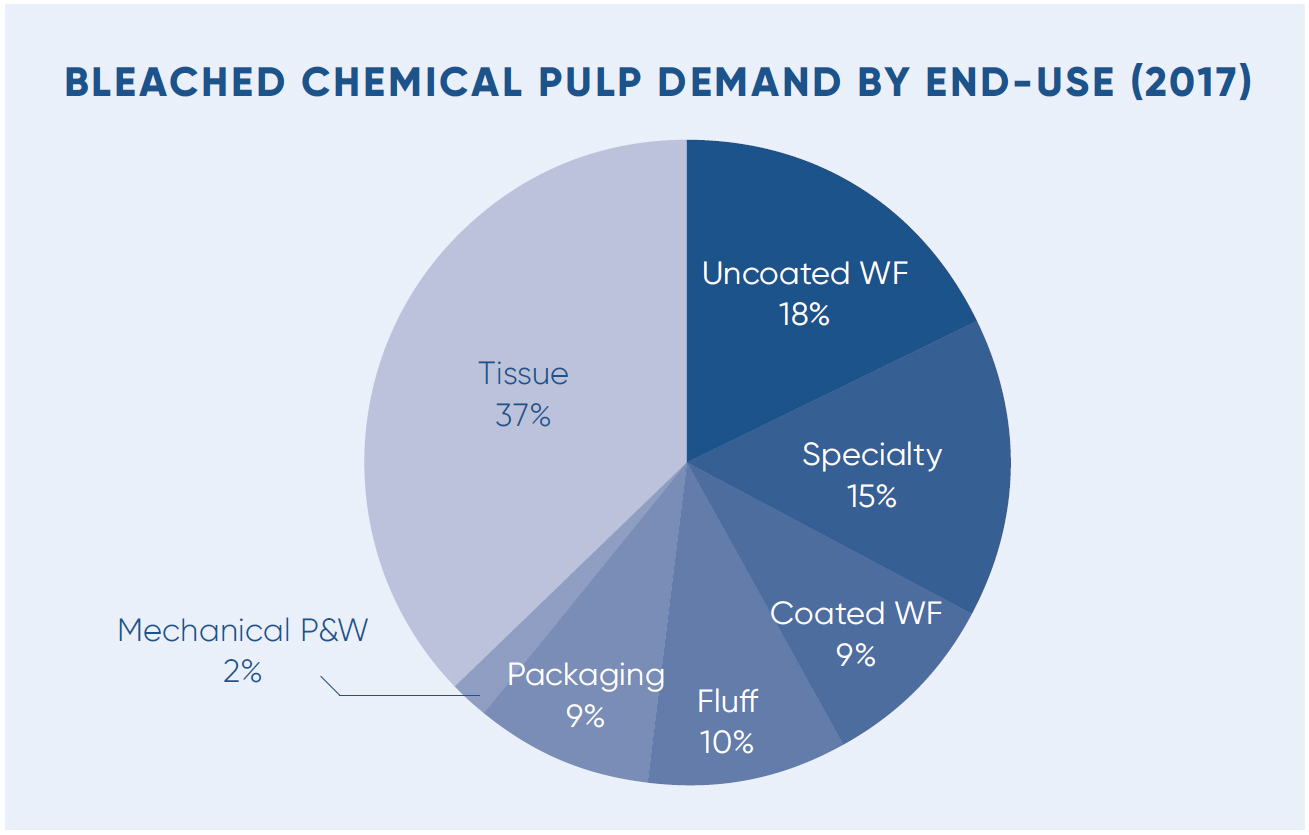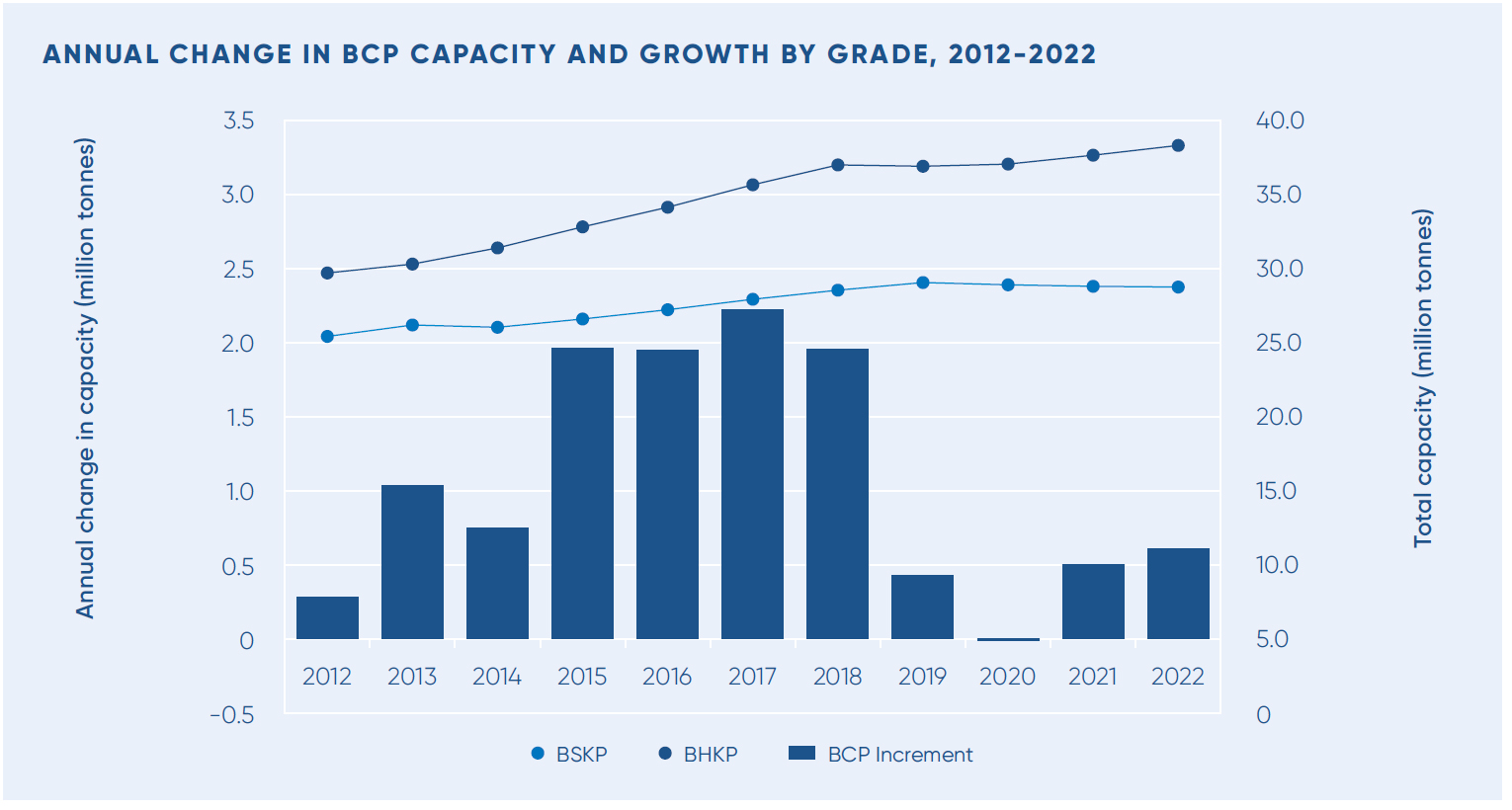Is the Pulp Market Evolving?
Understanding the Pulp Market Landscape
The global pulp market is a dynamic industry that plays a crucial role in the production of various paper and paper-based products. Pulp, which is derived from wood fiber, is an essential raw material used in the manufacturing of tissues, packaging materials, specialty papers, diapers, and other absorbent products. In this section, we will delve into the key dynamics shaping the global pulp market, explore how market forces impact the industry, and discuss any emerging trends that are noteworthy.
Key Dynamics Shaping the Global Pulp Market
The global pulp market is influenced by several dynamics that shape its growth and development. One of the key factors driving the market is the increasing demand for tissue and packaging paper. As the global population continues to grow, the demand for tissues and packaging materials rises, driving the need for more pulp production.
Additionally, the rise of e-commerce has had a significant impact on the paper packaging industry. With the increasing popularity of online shopping, the demand for packaging materials has also surged. This trend has led to a greater demand for pulp, which is used in the manufacturing of packaging materials such as corrugated boxes.
Furthermore, environmental regulations have played a vital role in shaping the pulp market. As sustainability becomes a key focus, manufacturers are under pressure to produce pulp in an environmentally friendly manner. This has led to the adoption of sustainable practices and the development of eco-friendly production methods in the pulp industry.
The rise of digital media has also had a notable impact on the paper industry. With the increased consumption of digital content, there has been a reduction in the demand for graphic paper, such as newspapers and magazines. This shift in demand has affected the pulp market, creating challenges for pulp producers who primarily supply the paper industry.
Market Forces Impacting the Pulp Industry
The pulp market is subject to various market forces that can either drive its growth or pose challenges. One of the significant market forces impacting the industry is the price fluctuation of raw materials. The cost of wood fiber, which is the primary material used in pulp production, can be volatile, affecting the overall profitability of pulp manufacturers.
Moreover, technological advancements have also influenced the pulp industry. Innovations in production processes and equipment have allowed manufacturers to improve efficiency, reduce costs, and enhance the quality of pulp. These advancements have enabled pulp producers to meet the growing demand for pulp-based products more effectively.
Additionally, globalization has had a significant impact on the pulp market. With the expansion of international trade, there has been an increased demand for pulp in different regions. China, for instance, is expected to become the largest importer of pulp by 2025, highlighting the global nature of the market and the opportunities it presents for pulp producers.
Emerging Trends in the Pulp Market
As the pulp market continues to evolve, several emerging trends are worth noting. One of the notable trends is the shift towards natural products in pulp processing. With the growing focus on environmental sustainability, there has been an increased demand for pulp produced from sustainable sources. This trend is driven by consumer preferences and industry regulations promoting eco-friendly practices.
Another emerging trend in the pulp market is the demand for dissolving pulp in the textile industry. Dissolving pulp, which possesses specific characteristics such as high cellulose content and alkali solubility, is used in textiles, cigarette filters, food additives, cosmetics, and personal care products. The shift towards dissolving pulp as a potential substitute for cotton in the textile industry presents new opportunities for pulp producers.
Furthermore, Asia Pacific, excluding Japan, has emerged as a dominant market for dissolving pulp, with China and India being major producers. The region's rapid industrialization, population growth, and urbanization have contributed to the increased demand for dissolving pulp in various industries.
In conclusion, the global pulp market is constantly evolving, driven by various dynamics such as increasing demand for tissue and packaging paper, the rise of e-commerce, environmental regulations, and the impact of digital media. Market forces like raw material prices and technological advancements also shape the industry. Moreover, emerging trends like the shift towards natural products and the demand for dissolving pulp in the textile industry present new opportunities and challenges for pulp producers. Understanding the evolving landscape of the pulp market is crucial for industry players to adapt and thrive in an ever-changing global market.
Major Players in the Pulp Market
The pulp market is a significant segment of the global paper industry. Pulp, which is not converted into paper, is sold as market pulp and used in various applications such as tissues, packaging, specialty papers, diapers, and absorbent products. In this section, we will explore the major players in the pulp market, their role in shaping the industry, and any emerging companies making an impact.
One of the key players in the pulp market is Resolute Forest Products. They produce market pulp at seven facilities in North America, with a total capacity of approximately 1.7 million metric tons, making them the third-largest producer in the region. Resolute Forest Products offers four varieties of pulp: softwood and hardwood kraft pulp for tissues and paper towels, fluff pulp for diapers, and fully dried recycled bleached kraft pulp for various applications. The company has made recent investments in their Calhoun facility in Tennessee, which will increase their market pulp production by 100,000 metric tons by the end of 2015. Furthermore, Resolute Forest Products is entering the premium private label tissue market, with a new tissue facility coming online in 2017.
Another major player in the pulp market is Resolute Forest Products. They produce market pulp at three facilities in North America, with a total capacity of 794,000 metric tons. Resolute Forest Products is a leading global producer of virgin pulp and recycled bleached kraft pulp used in making paper, tissue, packaging, specialty paper products, diapers, and other absorbent products. The company also offers various grades of market pulp, which can be explored in more detail on their website.
Along with these established players, there are also emerging companies making an impact in the pulp market. These companies are leveraging advancements in technology, sustainability practices, and product innovation to gain a foothold in the industry. These emerging players bring fresh perspectives and innovative solutions to the market, driving competition, and pushing the boundaries of what is possible in the pulp industry.
The global pulp market is highly competitive, with several key players vying for market share. These companies shape the industry through their production capabilities, product offerings, and market strategies. They invest in research and development, focusing on developing more sustainable and efficient processes, as well as expanding their market reach. By staying at the forefront of industry trends and customer demands, these major players maintain their position as industry leaders and drive the overall growth and development of the pulp market.
In conclusion, the pulp market is influenced and shaped by major players such as Resolute Forest Products, who produce a wide range of market pulp used in various applications. These companies invest in technological advancements, sustainability practices, and product innovation to meet the growing demands of the industry. Additionally, emerging companies bring fresh perspectives and innovative solutions to the market, further driving competition and pushing the boundaries of what is possible in the pulp industry. With the dynamic nature of the pulp market, it will be interesting to see how these players continue to shape the industry in the years to come.
Future Projections and Forecasts for the Pulp Market
The pulp market is a dynamic industry that plays a crucial role in various sectors, including packaging, tissues, specialty papers, and absorbent products. As the demand for these products continues to grow, it is essential to understand the future projections and forecasts for the pulp market. This section will delve into the anticipated trends, growth prospects, and challenges that lie ahead for the industry.
Projected Trends for the Pulp Market
The pulp market is expected to witness several trends in the coming years. One significant trend is the increasing demand for tissue and packaging paper. With the rise in hygiene-consciousness and e-commerce activities, the demand for tissue products and packaging materials is expected to grow steadily. This trend opens up opportunities for the pulp market to cater to the rising need for high-quality, sustainable, and cost-effective raw materials.
Another noteworthy trend in the pulp market is the growth of the Chinese market. China is projected to become the largest importer of pulp by 2025. The country's rapid industrialization and expanding middle class contribute to the increased demand for various pulp-based products. As the Chinese market continues to evolve, it presents immense potential for pulp manufacturers to tap into this lucrative consumer base.
Forecasts and Growth Challenges
In terms of forecasts, the pulp market is expected to experience both positive and negative influences. On the positive side, there is a forecasted surplus in the market due to new capacity additions. This surplus can lead to increased competition among pulp producers, potentially resulting in more cost-effective products for consumers.
However, it is important to note that the growth of the pulp market might face challenges as well. One significant challenge is the reduction in demand for graphic paper due to digitalization. As more people shift towards electronic media and digital communication platforms, the demand for traditional printing and writing papers decreases. Pulp manufacturers need to adapt to these changing market dynamics and explore alternative uses for their products.
Factors Influencing the Future of the Pulp Market
Several factors will influence the future of the pulp market, including demand, supply, and sustainability considerations. The demand for pulp-based products will continue to be a crucial driver of the market. As the global population grows and consumer preferences evolve, the demand for tissue, packaging, and specialty papers will increase. Pulp manufacturers should continuously monitor market trends and consumer demands to stay ahead of the competition.
On the supply side, ensuring a steady and sustainable supply of raw materials is essential for the long-term viability of the pulp market. Sustainable forest management practices and responsible sourcing of wood for pulp production are vital to maintain a balance between environmental concerns and industry growth.
Additionally, sustainability considerations will play a significant role in shaping the future of the pulp market. With increasing awareness about environmental conservation and the need to reduce carbon emissions, pulp manufacturers must prioritize sustainable practices throughout their operations. This includes investing in technologies that minimize water and energy consumption, reducing waste, and exploring alternative fibers for pulp production.
In summary, the future of the pulp market holds both opportunities and challenges. While there are positive projections for growth and demand, factors like digitalization and sustainability considerations will require pulp manufacturers to adapt and innovate. By staying ahead of market trends and embracing sustainable practices, the pulp industry can continue to thrive in the ever-changing business landscape.
Table 1: Major Players in the Pulp Market
| Company Name | Facilities | Total Capacity (Metric Tons) |
|---|---|---|
| Resolute Forest Products | 7 in North America | 1.7 million |
| Resolute Forest Products | 3 in North America | 794,000 |
Table 2: Projected Trends for the Pulp Market
| Trend | Description |
|---|---|
| Increasing demand for tissue and packaging paper | Growing awareness of hygiene and booming e-commerce activities contribute to the demand for pulp-based products |
| Growth of the Chinese market | China's rapid industrialization and expanding middle class lead to increased demand for pulp products |
| Surplus in the market due to new capacity additions | Forecasted surplus in the market can result in increased competition among pulp producers |
| Reduction in demand for graphic paper due to digitalization | Shift towards electronic media and digital communication platforms decreases demand for graphic paper |
Please note that the table data presented above is for illustrative purposes only and may not accurately represent the actual data.
FAQs about the Pulp Market:
What factors drive the global pulp market?
To understand the dynamics of the global pulp market, it is important to consider factors such as increasing demand for tissue and packaging paper due to population growth, the impact of e-commerce on packaging materials, and environmental regulations promoting sustainability.
How do market forces impact the pulp industry?
Market forces such as fluctuating raw material prices and technological advancements directly influence the profitability and efficiency of pulp manufacturers, while globalization and international trade opportunities present new markets for pulp producers.
What are some emerging trends in the pulp market?
Emerging trends in the pulp market include the shift towards natural products, increased demand for dissolving pulp in the textile industry, and the dominance of Asia Pacific, excluding Japan, as a key market for dissolving pulp.
Who are the major players in the pulp market?
Key players like Resolute Forest Products lead the industry with their production capabilities and product offerings, while emerging companies bring innovation and competition to the market, shaping the future of the pulp industry.
What are the future projections and challenges for the pulp market?
The future of the pulp market sees increasing demand for tissues and packaging paper, growth opportunities in the Chinese market, and challenges such as digitalization reducing the demand for graphic paper, emphasizing the need for adaptation and sustainable practices in the industry.
In summary, the global pulp market's landscape, major players, and future forecasts were explored. Market dynamics, key players, and emerging trends shape the industry significantly. Projections indicate growth and challenges ahead, influenced by demand, supply, and sustainability efforts. As the industry evolves, keeping an eye on these aspects will be crucial for stakeholders. Stay informed and proactive in navigating the dynamic pulp market landscape.





